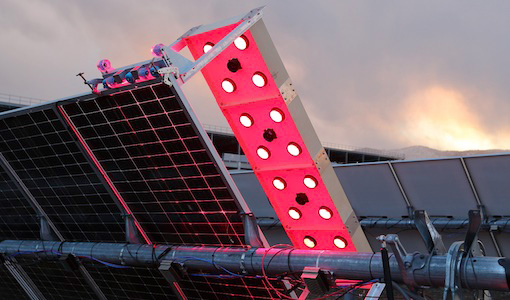A Faster, Cheaper Way To Give Solar Panels A Clean Bill Of Health
Support CleanTechnica's work through a Substack subscription or on Stripe.
In the Darkness of Night, NREL Is Prototyping a New Device That Could Cut Time and Costs for Inspections of Solar Installations After Potentially Damaging Weather
After severe weather events—like hail or major windstorms—fielded solar panels should be inspected for damage, usually with either complex electrical equipment or by removal for indoor lab testing. Often, these inspections reveal minimal damage but still require system downtime and high costs to confirm their health.
A new system, developed by National Renewable Energy Laboratory (NREL) photovoltaic reliability researchers with input from industry partners, simplifies and streamlines this process by relying on photoluminescence—a fundamental property of the semiconductors in solar cells. The PLatypus device shines light on the solar cells, which then re-emit light back to the device’s cameras. Damaged cells will shine less brightly, quickly indicating the health of the panels.
An entire system can be checked at a fraction of the time and cost previously required—all without any disconnection of the system’s electronics. The PLatypus device is under development as part of the Durable Module Materials Consortium (DuraMAT), funded by the U.S. Department of Energy Solar Energy Technologies Office and led by NREL.
Article from NREL, by Harrison Dreves.
Sign up for CleanTechnica's Weekly Substack for Zach and Scott's in-depth analyses and high level summaries, sign up for our daily newsletter, and follow us on Google News!
Have a tip for CleanTechnica? Want to advertise? Want to suggest a guest for our CleanTech Talk podcast? Contact us here.
Sign up for our daily newsletter for 15 new cleantech stories a day. Or sign up for our weekly one on top stories of the week if daily is too frequent.
CleanTechnica uses affiliate links. See our policy here.
CleanTechnica's Comment Policy

